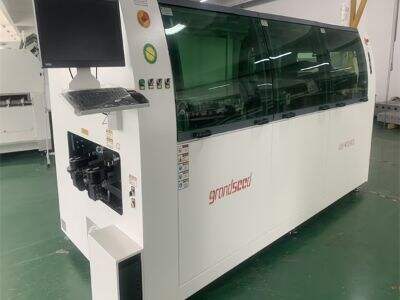Ever stopped to think about how your electronic devices, phones, tablets and computers are made? It's pretty fascinating. This part of making these devices is soldering, an integral step in this process. Soldering is the process of joining together two pieces of metal using a metal called solder. This forms a strong bond that allows electricity to pass between the two pieces of metal. Your electronic devices would never work without soldering. Soldering is a procedure basic to the manufacture of any electronic device, and to make sure that it’s done right, flow solder machine reflow ovens are used.
What Are Solder Reflow Ovens?
So, what are solder reflow ovens, you ask? You see, solder reflow ovens are ovens that are meant to heat up metal. The metal is then heated until the solder melts and runs fluidly between the pieces of metal. This will guarantee a strong link. These types of ovens are used in various industries and locations such as factories that produce computers, cameras, smartphones, and similar electronic devices. They allow workers to quickly and effectively automatic solder paste printer many elements together, making the producing process a lot easier.
How Does Soldering Work?
So, first, let’s discuss how solder works. When metal heats up, the tiny bits that make it up, called atoms, begin to speed up. This process continues until the material becomes hot enough to melt and flow. As the metal cools, the atoms slow and arrange themselves in a stable configuration. This generates a solid bond between the two pieces of metal, a crucial condition for an appropriate electrics connection.
To ensure that the soldering occurs correctly, solder reflow ovens use a special heating plan known as a heating profile. The heating plan instructs the oven on how to heat the metal, how long to keep it hot and how quickly to cool it after heating. To ensure that the solder melts and flows appropriately, it is very important that the heating plan is specific. If the automatic wave soldering temperature is incorrect, solder may not be effective, leading to a failed connection.
Why Are Solder Reflow Ovens Important for Electronic Assemblies?
You may ask why solder reflow ovens are important for making electronics. With modern electronic devices they are made of a myriad of tiny little components that need to be solder together to work effectively. This is really helpful in soldering many different parts in a quick way with the usage of a solder reflow oven. That means that, instead of soldering each piece individually — time-consuming — workers can use these ovens to do it all.
These ovens can also be used to manufacture more complex electronic devices. As an example of this, we can take a metal sheet which contains many different parts. This way all of these are soldered at once by heating this sheet in a solder reflow oven. This lets you know that when you use the device, it will do a good job and it will be trusted.
Solder Reflow Ovens — Different Types of Technologies
To make soldering more efficient, solder reflow ovens use different technologies. One of the most significant techniques is referred to as convection heating. Hot air is blown on it in order to heat it evenly in each part of the metal. This is critical because if some areas become hotter than others, the solder doesn’t flow well.
Some other types of heating methods that are used in solder reflow ovens are infrared heating where special infrared light is used to heat up the metal fo material and vapor phase heating. In vapor phase heating, the metal is placed in a vapor-rich chamber, imparting consistency to the heating profile. All of these procedures contribute to ensuring that the soldering operation goes well and is effective.
The Importance of Precision and Control
Lastly, let’s discuss the importance of precision and control in solder reflow ovens. In order to solder correctly, the oven has to get the metal to a target temperature, and then hold it there for the correct amount of time. If it’s too hot or too cool, or if the time is wrong, then the solder may not wet properly.
In addition, solder reflow ovens can be configured to follow specialized temperature profiles based on the type of solder used. This is important to ensure that all types of components are soldered properly since this is a key factor for the reliability and durability of the final electronic device.
Overall, solder reflow ovens are a crucial part of the production process for the modern electronic devices we use every day. No wonder, they rely on a plethora of technologies to ensure that soldering is done economically and reliably, and that precision and control are vital to building devices that can operate with a maximum efficiency and longetivity. Make Electronics that Last: SHENZHEN GRANDSEED TECHNOLOGY DEVELOPMENT Companies that use high quality solder reflow ovens to build electronics that last
 EN
EN
 AR
AR
 BG
BG
 HR
HR
 CS
CS
 DA
DA
 NL
NL
 FI
FI
 FR
FR
 DE
DE
 HI
HI
 IT
IT
 JA
JA
 KO
KO
 PL
PL
 PT
PT
 RU
RU
 ES
ES
 SV
SV
 TL
TL
 ID
ID
 LT
LT
 SR
SR
 SK
SK
 VI
VI
 HU
HU
 TH
TH
 TR
TR
 AF
AF
 MS
MS
 BE
BE
 MK
MK
 AZ
AZ
 BN
BN
 LA
LA
 MN
MN
 NE
NE
 TA
TA
 UZ
UZ
 XH
XH

/images/share.png)
